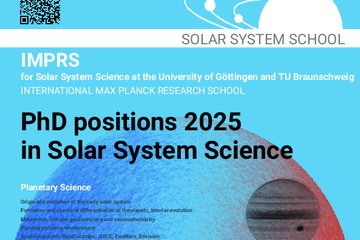All genres
21.
Poster
Solar inertial modes: new observations and models. ESRP Meeting, Jena, Germany (2022)
22.
Poster
Improved helioseismic imaging of the farside. Dynamics of the Sun and Stars: Honoring the Life and Work of Michael J. Thompson,, Boulder, USA (2019)
23.
Poster
Optimal averaging for helioseismic measurements using the singular value decomposition. XXXth General Assembly of the International Astronomical Union, Vienna, Austria (2019)
24.
Poster
On the validity of the frozen-in approximation for acoustic wave propagation through solar granulation. XXXth General Assembly of the International Astronomical Union, Vienna, Austria (2019)
25.
Poster
Multiple scattering of acoustic waves. AG2017 The many Scales of Universe: Galaxies, theirs Suns and their Planets, Göttingen, Germany (2017)
26.
Poster
Comparison Between Travel-time and Amplitude Measurements Using Deep-focusing Time-distance Helioseismology. AG Meeting 2017, Göttingen, Germany (2017)
27.
Poster
A Possible Improvement on Helioseismic Holography. the many Scales of the Universe: Galaxies, their Suns, and their Planets - Annual Meeting of the Astronomische Gesellschaft 2017, Göttingen, Germany (2017)











